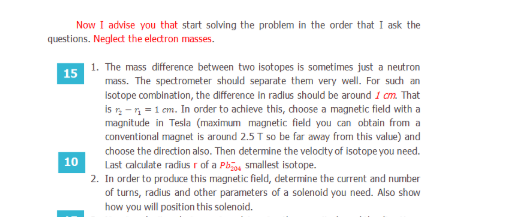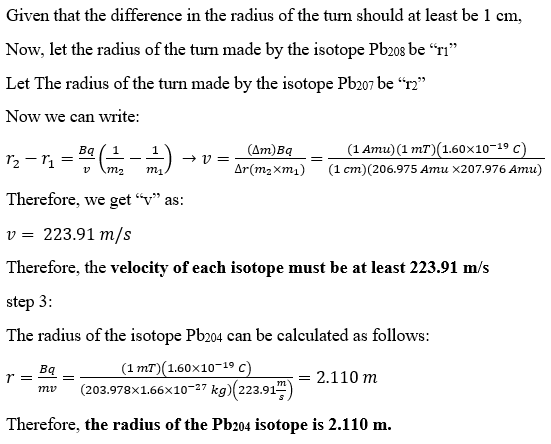The mass difference between two isotopes is sometimes just a neutron mass. The spectrometer should separate them very welI. For such an Isotope combination, the difference in radius should be around 1 am. That is r- =1 cm. In order to achieve this, choose a magnetic field with a magnitude in Tesla (maximum magnetic field you can obtain from a conventional magnet is around 2.5T so be far away from this value) and choose the direction also. Then determine the velocity of isotope you need. Last calculate radius r of a Ph, smallest isotope. In order to produce this magnetic field, determine the current and number of turns, radius and other parameters of a solenoid you need. Also show how you will position this solenoid.
definitely dissolve using vectors.Please help me


Given information:
The difference in the radius of the isotopes, that have the mass difference of 1 neutrino, should at least be 1 cm.
Let us assume the magnetic field be 0.001 T or 1 mT. Now, for the particles to tilt in the left direction the magnetic field should be out of the paper. If they are to be tilt to the right the magnetic field should be into the paper.
From the given isotopes, the isotope that have the mass difference of 1 neutrino are Pb206, Pb207, Pb208. Let us assume the isotopes of the greatest mass say (Pb207, Pb208)
Now, the force exerted by a magnetic field (B) on a charge moving at velocity (v) (which is perpendicular to B) is given by:


Step by step
Solved in 3 steps with 3 images
